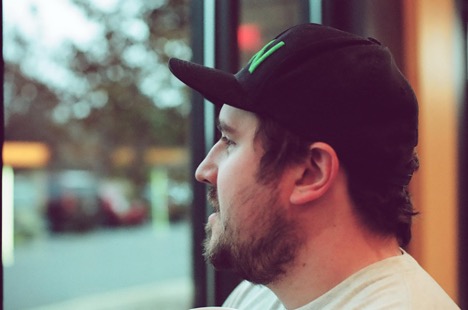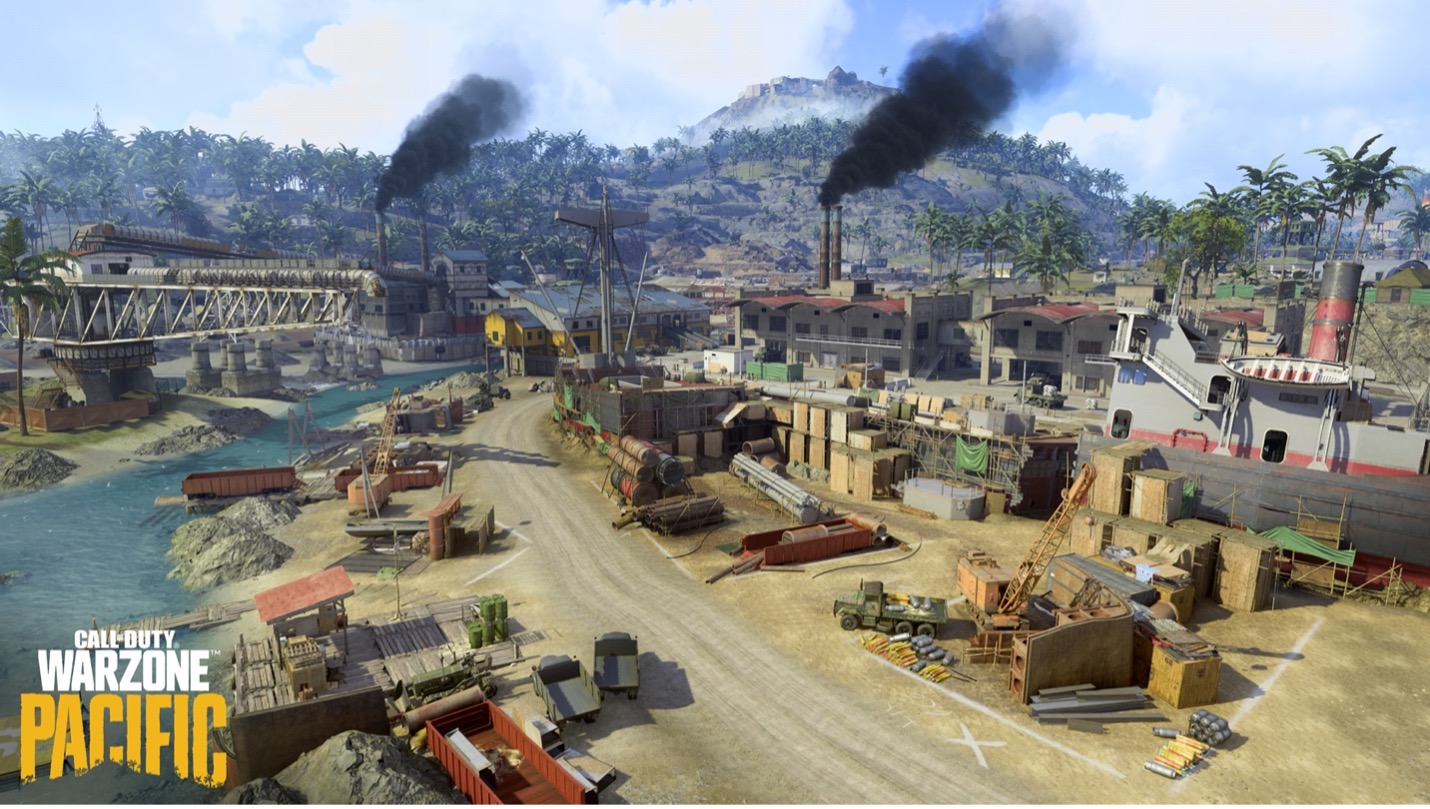An "Everyone Plays" Culture: Raven Software’s Senior Lead Artist On The Development of Warzone’s Caldera
Every square inch of Caldera is handcrafted by environmental artists led by Button. He discusses what it takes to manage such a huge project, as well as the studio culture that keeps the creative process churning.
Featuring fifteen major zones and over 200 points of interest including a massive central volcano, Caldera represents one of the most ambitious Call of Duty environments to date. The marquee location in the free-to-play Warzone, the map, is a major feat of artistry and level design, and the developers at Raven Software have put everything into making it the best player experience possible.
To help us better understand the collaborative efforts that go into creating an environment of this size, we spoke to Senior Lead Artist, Mike Button, of Raven Software located in Middleton, Wisconsin, which is also the lead studio developing Warzone.

Mike Button: “Every year I ask, how did we possibly manage to pull that off? And every year it feels like we do something crazier than the last.”
Mike is a Wisconsin native, and while he dreamed of making movies right out of college, life and work took him in a different direction. “When I was coming out of school and interviewing with movie houses and visual effects houses, it was very cold,” he says. “They’re just looking for another guy to come in. Raven’s not about that at all.”
In 2007 and 2008, he was hired as an environment art intern to work on Singularity, which was being developed before the studio turned its attention to the Call of Duty franchise. When he discovered that Call of Duty was in his immediate future, he played through every title available, including hours upon hours of multiplayer bouts alongside his brothers. That deep learning experience paid off. “I can still draw multiplayer maps I worked on,” he says. “I recall every little detail because it’s so ingrained in my head.”
“Back then, you could have one artist on a whole map,” he says. Fast forward to over a decade later, and that’s hardly the case anymore, especially when developing an environment as massive as Caldera. Now he’s the head of a full team, but it’s still no easy task.

Tactical view of Caldera, the latest map released for Warzone.
Square One: Deep Breath and Go
The airfield, naval arsenal, capital, beachhead, ruins, lagoon and lighthouse…these are just a handful of the many intricate environments designed to bring life to Caldera. And with the capabilities brought by modern computing power, it’s not simply a matter of greater size but also of greater magnitudes, and more detail as well.
“Every time we do something like this,” he says, “I’m terrified.” Following the studio’s work on the debut Warzone map Verdansk, they were set to do it again. “When we learned that Caldera was going to be a big map like Verdansk, everybody took a deep breath, and then we all jumped in.”
Piece by Piece
In terms of the specifics, the artists were given much creative latitude. “We knew it was going to be a Pacific-themed map, and that it would generally be the same size as Verdansk. Beyond that it was up to us.”
It wasn’t long before the leads reached out to the broader team – a practice Raven prides itself on. “Raven is pretty keen on getting everybody involved at all levels of the organization,” he says. “At a lead level, we started talking about what would be fun locations like the volcano, but within that same week we were pinging the team and seeing what they thought about that, too.”

Caldera’s volcano looming on the horizon.
It started by dividing the map into its component parts. “We generally break it down into various grid quads,” he says. “A team gets assigned to each of these quads, and then they define what’s in it along with an art director and map designer.”
Mike stresses the critical nature of the collaboration between art and design. ”We’ve really worked to make sure that the art and design teams are closely embedded at all times from start to finish. There's rarely a thing that only a map designer or only an environment artist touches. That’s one of the unique things about working on games, because everything impacts gameplay.”
Inevitably, there are moments in the creative process when two ideas compete, and it’s an opportunity for Production and Creative to sort through the scope of the idea, its visual impact, and its unique attributes to determine the direction to commit to.
“That could be a makeshift runway along the beach, a carrier beached on a sandbar, or even just more player spawn locations in general. Some would require completely new locations with art and design, while others might be simple design changes. It runs the gamut. But the team is absolutely collaborating on what’s in their quad down to the little details, like what are the phones going to look like, and what kind of chairs are we going to use?”

Raven Software’s Wall of Games, displaying 32 years of development.
Play Time Is Important
The other key component to success? Playing the game, day in and day out. “As a designer,” says Mike, “if you don’t play the game yourself, you can put something out there that just doesn’t work because you’re not playing it the way real players do. You can fall into the trap of playing the way you want it to play. It becomes a kind of self-fulfilling prophecy, and then it gets out in the wild and they’re not doing at all what you wanted them to do.”
So, no matter the role, everyone plays. “We play-test daily. We mix people up and form different groups together with mics. It’s been tough while working remotely, but it’s just so important. It doesn’t matter what you’re doing. And it’s not just sitting at your desk and playing casually. We communicate and call out enemies and directions just like we’re playing with friends at home.”
The team feels that their collaboration and immersion have helped to create something truly special. “On Caldera, there’s more interesting engagements, the verticality adds a lot, and the lighting is better. The team really pulled something off that in the beginning we thought was totally insane.”
Family Bonds
Though Raven Software’s Midwest location separates the studio from its cohorts, the family dynamic remains strong. “Being in the Midwest, it’s very family oriented,” he says. “You know the people you work with and have friends here.”
Though the studio has grown quite a bit from its early days, they still try to maintain that family dynamic when hiring new talent into the studio. This is especially important as they face the growing demands of game development.
“We don't have as much ramp up time as we used to have with early career people on the team or even new people from outside of Activision.” That often means learning alongside each other. “The tech is changing, and best practices are pretty different for Warzone compared to a traditional multiplayer map.”
For that reason, new talent can have a huge impact on the future of the studio. “It’s all new territory. We have to learn all the new tools and everything that's going on, but this means that there’s tons of opportunity. It can be scary because it’s a bit of trial by fire for everybody, but for newer people it’s wide open and you can make anything of it if you’re dedicated. You can help define the future of what we do here.”
Ultimately, it comes down to the teamwork. “We put a lot of effort in creating teams of people who care about each other and support each other. We win as a group, not individually.”
